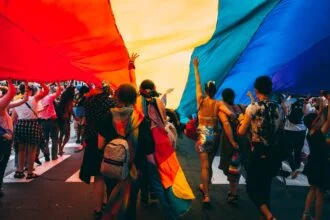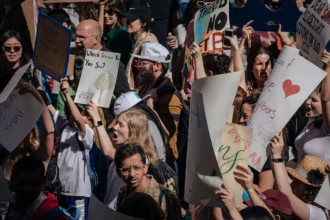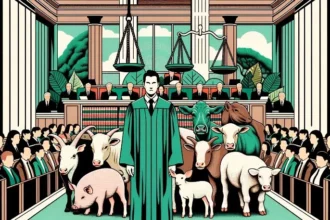In 2022, the world bore witness to a tragic and sobering reality – 177 environmental activists paid the ultimate price for their unwavering commitment to safeguarding our planet. This analysis embarks on a critical examination of this crisis, casting a spotlight on Latin America, a region where the direness of the environmental activists’ struggles in Latin America is most pronounced.
- The Geography of Tragedy: Latin America’s Heavy Toll
- Notable Incidents: The Tragic Loss of Dom Phillips and Bruno Pereira
- Colombia: Leading in Environmental Activist Murders
- Global Implications: Criminalization and Impunity
- Corporate Complicity: Multinationals’ Role in Tragedy
- Indigenous Communities: Disproportionate Targets
- International Commitments vs. Reality: A Stark Discrepancy
- Conclusion: Urgent Need for Global Action
The global environmental activist community, consisting of passionate individuals and organizations, has long been at the forefront of the battle against environmental degradation, deforestation, pollution, and the exploitation of natural resources. These dedicated activists are the guardians of our ecosystems, striving to protect the delicate balance of nature for present and future generations.
However, the year 2022 was marred by a disturbing trend – the targeted violence against those who champion environmental causes. This violence reverberated worldwide, but Latin America emerged as a troubling epicenter, with a disproportionate number of activist casualties. Within this region, the Amazon rainforest, Earth’s invaluable lung, stood as a focal point of both ecological significance and peril.
The Geography of Tragedy: Latin America’s Heavy Toll
Latin America, in 2022, became the epicenter of a harrowing phenomenon, accounting for an overwhelming 88% of environmental activist murders worldwide. Within this vast region, it was the Amazon rainforest, the crown jewel of Earth’s biodiversity, that bore the brunt of the crisis, with one in every five activist killings transpiring within its verdant expanse.
Land colonization leads to deforestation, displacing local communities and wildlife.
The Amazon, often referred to as the “lungs of the planet,” is a critical ecosystem that plays a pivotal role in global climate regulation. Yet, it is under siege from a multifaceted assault that encompasses extractive industries, land colonization, timber exploitation, and intensive farming. These activities threaten not only the irreplaceable biodiversity but also the indigenous communities and environmental defenders who stand in their way.
Extractive industries, driven by the relentless pursuit of profit, exploit the Amazon’s vast reserves of minerals, oil, and gas. Land colonization leads to deforestation, displacing local communities and wildlife. Timber exploitation decimates ancient forests, while intensive farming replaces once-diverse landscapes with mono-cultures. These activities not only degrade the environment but also disrupt the delicate balance that sustains life in the region.
The Amazon’s significance extends far beyond its borders, as it acts as a global climate regulator, influencing weather patterns, rainfall distribution, and carbon storage. The violence inflicted upon those who seek to protect it sends shockwaves through the entire planet, with repercussions that are felt across continents.
Notable Incidents: The Tragic Loss of Dom Phillips and Bruno Pereira
The chilling shadows of violence cast long over the Amazon were starkly illuminated by the heart-wrenching murders of British journalist Dom Phillips and indigenous expert Bruno Pereira within Brazil’s Amazon region. Their untimely deaths stand as poignant symbols of the severity of the crisis that plagues environmental activists.
Dom Phillips, a respected journalist, and Bruno Pereira, an expert on indigenous peoples, lost their lives in June of that fateful year while traversing indigenous territory in the heart of the Amazon. Their tragic deaths serve as a stark reminder that the danger faced by environmental defenders knows no boundaries, nationality, or profession.
Multinational corporations, often driven by profit-driven interests, operate within the territories inhabited by indigenous communities.
These two individuals were not isolated cases; rather, they were part of a larger, grim narrative. Since 2014, an alarming total of nearly 296 people who dedicated their lives to protecting the Amazon and its communities have met similar fates. This staggering figure unveils a shared reality characterized by violence, torture, and relentless threats faced by both activists and the vulnerable communities they strive to safeguard.
The deaths of Dom Phillips and Bruno Pereira serve as somber milestones in a prolonged struggle for environmental preservation in the Amazon, a region perpetually under siege from powerful interests seeking to exploit its vast resources. Their stories are emblematic of the broader crisis that plagues Latin America and, by extension, the global environmental activist community.
Colombia: Leading in Environmental Activist Murders
In the bleak landscape of environmental activist violence, Colombia emerges as a disconcerting focal point. In the tumultuous year of 2022, it claimed the unenviable distinction of leading the world in activist murders, accounting for an alarming one-third of the global total.
Despite Colombia’s seemingly laudable commitment to a regional agreement, ratified in 2022, aimed at safeguarding environmental defenders, the numbers tell a distressing tale. Rather than abating, the crisis intensified, with the number of activist murders nearly doubling compared to the preceding year. This troubling surge underscores the pressing need to confront the issue head-on.
The surge in deforestation not only threatens biodiversity but also exacerbates the climate crisis.
The regional agreement, conceived as a beacon of hope for environmental defenders, was meant to provide a legal framework for their protection. However, the reality on the ground paints a starkly different picture. Instead of safety, many activists find themselves in the crosshairs of violence and intimidation, and justice remains elusive.
Colombia’s tragic prominence in activist murders serves as a stark reminder that even the most well-intentioned commitments can falter in the face of deeply entrenched interests and systemic challenges. It also highlights the urgency of international solidarity and intervention to stem the rising tide of violence against those who dedicate their lives to preserving the environment.
Global Implications: Criminalization and Impunity
The plight of environmental defenders extends far beyond the tragic loss of lives. In their courageous pursuit of justice for our planet, they are increasingly met with a troubling tactic – criminalization, employed as a weapon to silence their voices. This analysis unveils a disturbing pattern of impunity that shrouds these crimes in darkness.
Criminalization takes many forms, from legal charges and baseless accusations to the imposition of restrictive laws designed to stifle activism. As governments and powerful interests seek to protect their economic interests, environmental defenders find themselves labeled as threats, radicals, or even terrorists.
This pattern of criminalization goes hand in hand with a deeply concerning aspect of these cases – impunity. Despite the gravity of the crimes committed against environmental defenders, a shockingly low number of perpetrators are held accountable. Governments around the world often fail to investigate these crimes thoroughly or bring the responsible parties to justice.
The lack of accountability perpetuates a cycle of violence and intimidation. When perpetrators face no consequences for their actions, it emboldens others to continue their attacks. This impunity not only endangers the lives of activists but also threatens the fundamental principles of justice and human rights.
The global implications of this distressing pattern are clear – the fight to protect our planet and those who champion it is a battle not just for environmental justice but for the very essence of human rights and democracy.
Corporate Complicity: Multinationals’ Role in Tragedy
In the complex tapestry of the environmental activist crisis, a disconcerting thread emerges – the complicity of multinational corporations based in the UK, EU, and the US in human rights violations against indigenous communities. This layer of corporate involvement adds a troubling dimension to an already dire issue.
Multinational corporations, often driven by profit-driven interests, operate within the territories inhabited by indigenous communities. In their pursuit of resources and wealth, these companies frequently disregard the rights, traditions, and well-being of these vulnerable populations.
One of the alarming aspects of this complicity is the violation of human rights, which extends from land dispossession and displacement to environmental degradation. Indigenous communities, historically marginalized and already facing numerous challenges, bear the brunt of these violations.
International cooperation must extend beyond mere agreements and rhetoric to robust action and accountability.
This dynamic not only perpetuates a cycle of injustice but also poses a significant obstacle to resolving the environmental activist crisis. The involvement of powerful corporations, often with significant political influence, complicates efforts to hold those responsible accountable for their actions.
The complicity of these corporations serves as a stark reminder of the interconnectedness of global issues. Environmental activism and human rights are inseparable, and addressing one necessitates addressing the other. Only through collective action and heightened awareness can we hope to rectify this alarming facet of the environmental activist crisis.
Indigenous Communities: Disproportionate Targets
Within the disheartening narrative of environmental activist violence, a disturbing disparity comes to light – indigenous communities, constituting a mere 5% of the global population, endured a disproportionate 34% of the total activist murders in 2022. This unsettling reality underscores their vulnerability and the critical role they play in preserving our forests.
Indigenous communities have historically served as custodians of some of the world’s most biodiverse and ecologically significant regions, including the Amazon rainforest. Their profound understanding of these ecosystems and their sustainable practices have been pivotal in maintaining the delicate balance of nature.
However, this very role, essential for global environmental well-being, makes them targets for those seeking to exploit natural resources. Land disputes, illegal logging, and mining ventures encroach upon indigenous territories, pushing these communities to the forefront of environmental defense efforts.
The disproportionate violence against indigenous communities is a profound injustice, not only endangering the lives and cultures of these communities but also compromising the future of our planet. Their plight underscores the interconnectedness of environmental protection and the preservation of indigenous rights.
International Commitments vs. Reality: A Stark Discrepancy
Amid the escalating environmental activist crisis, a stark incongruity emerges between international commitments and the grim reality on the ground. Despite pledges and agreements, primary forest loss surged by a disheartening 10% in 2022, casting doubt on the efficacy of these well-intentioned accords.
Around the world, nations came together and made solemn commitments to address the urgent issue of deforestation. These agreements, often celebrated on the global stage, were meant to herald a new era of conservation, promising to halt the relentless destruction of primary forests.
However, the data from 2022 tells a different story. Instead of witnessing a decrease in primary forest loss, we observed a distressing increase, raising critical questions about the effectiveness of these international commitments. The surge in deforestation not only threatens biodiversity but also exacerbates the climate crisis.
This glaring disparity between words and actions underscores the urgent need for greater accountability and more robust enforcement mechanisms. While nations may pledge to protect forests and the activists defending them, the reality is that deforestation continues unabated in many regions.
The international community must grapple with this disconcerting paradox, recognizing that the commitments made on the global stage must be followed by resolute actions on the ground to safeguard our planet and fulfill our promises to future generations.
Conclusion: Urgent Need for Global Action
The grim reality of escalating violence against environmental activists, particularly pronounced in Latin America, serves as an urgent clarion call for immediate international attention and concerted cooperation. The imperative of safeguarding those who dedicate their lives to protect our planet is paramount as we navigate the tumultuous waters of the climate crisis, all while upholding the fundamental tenets of human rights.
The stark statistics, harrowing incidents, and complex geopolitical dynamics explored in this analysis paint a dire picture of the environmental activist crisis in 2022. From Latin America’s disproportionate burden to the troubling roles of multinational corporations and the glaring gaps between international commitments and reality, the challenges are multifaceted and intertwined.
Yet, in the face of adversity, there is hope. The courage and resilience of environmental defenders, the unwavering commitment of indigenous communities, and the dedication of those who seek justice and change provide rays of light in these dark times.
To address this crisis effectively, it is imperative that nations, organizations, and individuals alike come together in a spirit of solidarity and shared responsibility. International cooperation must extend beyond mere agreements and rhetoric to robust action and accountability.
The environmental activist crisis is not merely an isolated concern; it reflects broader challenges faced by humanity in the 21st century. It underscores the inseparable link between environmental protection, human rights, and social justice.









